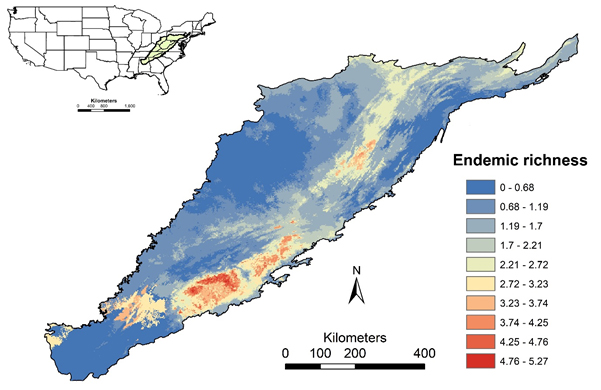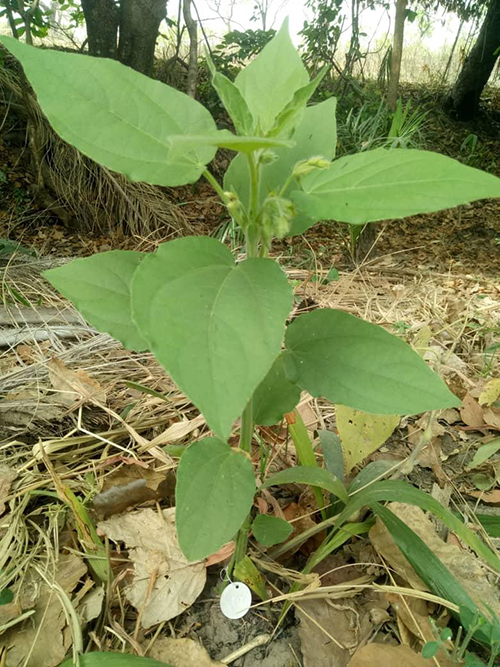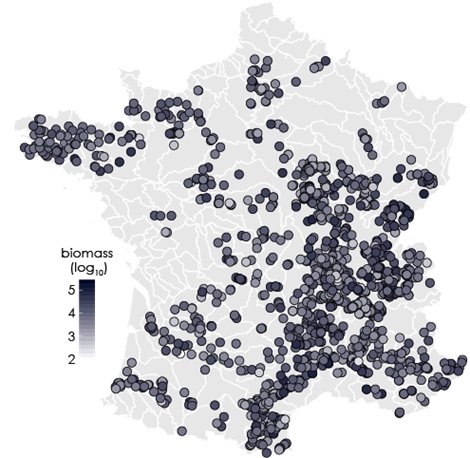The Conservation Science Group work on a wide range of research projects. Here we feature some current projects. Some projects are funded research programs involving teams of researchers from the group; others are designed and led by our students.
Funded Research Programs

For more information about this project, contact: Paul Armsworth, p.armsworth@utk.edu
Biodiversity-ecosystem functioning (BEF) relationships are among the most well-studied in ecology. Generally, BEF research indicates that increasing local biodiversity has a positive effect on ecosystem functions (e.g., stability, biomass production) and indicates potential negative effects on ecosystem services from global change-induced biodiversity loss. However, the majority of BEF research derives from terrestrial systems at relatively small spatial scales.
A collaboration between the Giam Conservation Lab (UTK EEB) and French researchers provides a continental-scale analysis of BEF relationships in French stream fish communities. The study identifies that increasing fish biodiversity (species richness and functional diversity) drives community biomass production, after controlling for local environmental conditions. These results indicate that additional anthropogenic stressors may negatively impact aquatic ecosystem functioning in this system.
Woods T, Comte L, Tedesco P, and Giam X (accepted). Testing the diversity-biomass relationship in riverine fish communities. Global Ecology and Biogeography.
A team of population ecologists from the Conservation Science group is working on understanding why endemic plant species do not expand beyond their range limits in West Africa, They are using several species including a perennial herb, Thunbergia atacorensis, and a cycad, Encephalartos barteri, to test the mediating role of biotic interactions. In addition, these ecologists are also creating some of the longest and detailed tropical plant demographic datasets to investigating the role of humans in shaping the long-term population dynamics and risk of extinction of tree species that provide valuable ecosystem services in Africa.
For more information about this project, contact: Orou Gaoue, ogaoue@utk.edu.

Thumbergia atacorensis

Encephalartos barteri
Student Team Projects
As part of our newly created Environmental Science and Policy Practicum course, teams of graduate student’s design projects that address current issues of regional science and policy concern. Projects reports are given below.
As part of our newly created Environmental Science and Policy Practicum course, teams of graduate students design projects that address current issues of regional science and policy concern. Our first cohort of practicum students chose to describe and map surface water quality issues that affect the Knoxville urban area. They also developed a data pipeline and set of computer codes enabling others to replicate their efforts for water quality issues affecting other urban areas. The students’ report can be found here.
The environment is constantly changing, affecting the structure and function of ecosystems and impacting people’s quality of life. Different agencies within the state of Tennessee monitor and report environmental data, but there is no single, easy-to-use, centralized report summarizing the range of observations made. We describe the need for an integrated environmental report for the state. State of the environment reporting has been done at the national level, but is less common for states. However, a clear precedent for state-level reporting in Tennessee has been set by an influential annual report on the state of the state’s economy. We identify the steps necessary to synthesize a counterpart state of the Tennessee environment report. We also offer examples of the kind of environmental indicators it would be important for such a report to consider, presented in the form of an exemplar report. An annual state of the environment report will help Tennessee promote a sustainable and resilient future.


